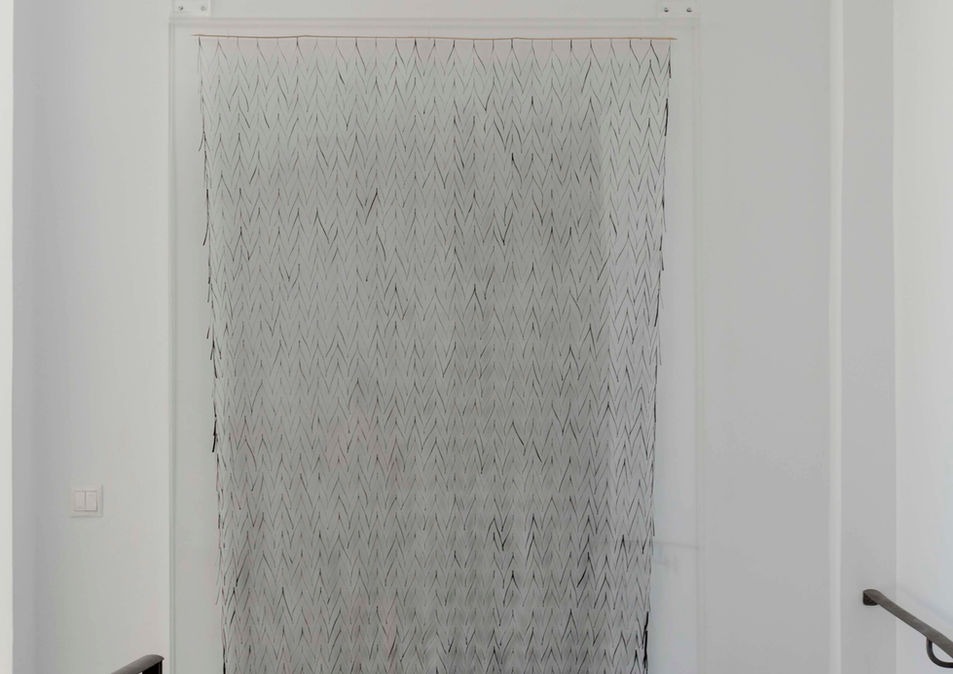HANDMADE
On the Social Dimensions of Craft
A collaboration between the National Museum of Contemporary Art, Athens (ΕΜΣΤ) and the Schwarz Foundation (Munich/Athens/Samos)
Schwarz Foundation, Art Space Pythagorion, Samos
04.08 — 25.09.22
Participating artists:
Nikos Alexiou, Bertille Bak, Silvina Der Meguerditchian, Maria Louizou, Jennifer Nelson, Natalia Manta, Eleni Mylonas, Sphinxes, Maria Varela
ΕΜΣΤ is pleased to announce its collaboration with the non-profit Schwarz Foundation, as part of its new policy of creating synergies and partnerships with other institutions in Greece and abroad and its policy to showcase its collection outside the museum itself, and beyond its metropolitan context, in other regions of Greece. Within this framework, the group exhibition HANDMADE: On the Social Dimensions of Craft will be presented in the Schwarz Foundation’s venue, Art Space Pythagorion, on the Greek island of Samos, from the 5th August – 25th September this year. The exhibition features nine artists, including works from the Museum’s Collection.
In recent years there has been an upsurge and a renewed interest in craft-based or hand-crafted work in the contemporary art field. The term “craft” refers to processes, actions, techniques, and forms of creativity usually performed manually or with the use of manually operated apparatus. With the advent of the industrial revolution, the pressure for efficiency, and low-cost mass production, craft gradually became marginalized and in some cases it has disappeared altogether.
But many artists are returning to hand-crafted practices, to the tangible and to the haptic; one reason is perhaps the increasing pervasiveness of digital culture, the increasing dominance of the immaterial in contemporary life, and the marginalization of the tangible and the haptic. The other may be that in many countries, craft was primarily associated with women, and the working class, as well as with nonwhite people – i.e. marginalized groups who were excluded from the domain of ‘high’ art and orthodox or dominant art historical narratives. Today, the art-craft opposition is also being challenged because of this underlying power dynamic, which dictated what was valued and what not. This, in many ways, explains the return of craftwork, which was once an integral part of artistic practice in any case.
However, whilst much of the current craft-based practices are focused on the materiality, the form of the handcraft in question, or the exploration of tradition, this exhibition will focus on craft-based work that has an underlying social and political dimension, and will examine the social and political economies and contexts, as well as the relational networks that lie at the core of craft-based practices and traditions. In the work of the participating artists the practice of hand-crafting becomes an integral partof collective empowerment, agency, the sharing of knowledge, the preservation or re-writing of history, and finally a buffer against historical amnesia. Craft-based contemporary artistic practices thus become an important component in reconsidering the politics of materiality, identity, labour and social exchange as well as embodying histories in its materials.
The Schwarz Foundation is a private non-profit institution aiming to foster the exchange of ideas and practices between cultures and countries. In view of the significant changes taking place in Europe which call for new ways of thinking, the foundation’s initiatives aim to assist in contributing to this process of re-evaluation and re-thinking the continent, particularly southeast Europe and its relation to its surroundings. In this context, it initiates and supports projects which include exhibitions, residencies and curatorial fellowships, music concerts and a festival, as well as community support projects. It is the strong belief of the foundation that the understanding of history and traditions, as well as the sensitivity towards environmental issues within the Southeast Mediterranean Region, can play a vital role in designing the future of this historically important area
A full-colour bi-lingual (EN / GR) catalogue designed by Rafaela Drazic was produced for the exhibition.
For further information click here.










